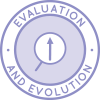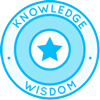
Study Technology Methodology
Study Technology, or Study Tech, is a teaching methodology developed by L.Ron Hubbard, founder of the Church of Scientology (here’s One Community’s Spiritual Philosophy page). According to Study Technology, there are three barriers that prevent students from learning: absence of mass, too steep a gradient, and the misunderstood word and the Study Technology methodology is designed to address these. This page is meant to function as an ever-expanding archive of open source, free-shared, and duplicable Study Technology inspired ideas we reviewed as part of developing the One Community Education Program sections: Curriculum for Life, Teaching Strategies for Life, Learning Tools and Toys for Life, and building The Ultimate Classroom. These components are designed to be combined to create endless “Lesson Plans for Life” purposed to grow and evolve what we feel will be the most comprehensive, effective, and diversely applicable free-education program and resource archive in the world. The One Community Foundations of Teaching, Leadership, and Communicating, combined with a collaborative Evaluation and Evolution Component (Portfolio Creation and Maintenance), help us to further grow and adapt both the program and as individuals.
RELATED PAGES










OTHER WAYS TO CONTRIBUTE TO EVOLVING THIS EDUCATION PROGRAM WITH US
SUGGESTIONS | CONSULTING | MEMBERSHIP | OTHER OPTIONS
STUDY TECHNOLOGY METHODOLOGY IDEAS
 If you have ideas from the Study Tech system and style of teaching that you feel should be added to this developing resource guide, please use our Education for Life Collaborative Input Page. Our goal is to list here what we feel are the best, simplest, and most usable tools from this system with application and benefit for all ages?
If you have ideas from the Study Tech system and style of teaching that you feel should be added to this developing resource guide, please use our Education for Life Collaborative Input Page. Our goal is to list here what we feel are the best, simplest, and most usable tools from this system with application and benefit for all ages?
NOTE: One Community does not believe there is any one system that is the best. It is our Highest Good of All philosophy to look at all systems and all methodologies. Our goal is to learn and integrate everything we can to better inspire and create the Education for Life program as an open source and free-shared globally collaborative and accessible program available to positively contribute to the education of anyone who chooses to use it.
Here is our continually evolving list of Study Tech inspired ideas divided into the categories of the Education for Life program:
Study Tech Foundations of Leadership, Teaching, and Communicating
If you’d like to help us make this list better, please submit your Study Technology inspired suggestions so that we can integrate them here and into the Foundations of Teaching, Leadership, and Communicating component.
┏ What you study should improve and be applicable to life
┏ Before starting to learn anything, you should know HOW to learn
┏ Learning theory is always followed by a practical task or tasks to train skills application
┏ Before every lesson (which lasts 90 minutes with a 30 min – 1 hour break), “centering” takes place
┏ Address “lack of mass” (e.g. studying a tractor without seeing it) when teaching
┏ Address “too steep a gradient” (a student tries to learn too quickly and gets confused by the material)
┏ Address “misunderstood words”(a misunderstood definition or a not-comprehended definition or an undefined word)
┏ Teach how to differentiate between valid and misleading information and be able to identify key points
There is always something to learn, no matter how masterly you think you are in a particular sphere of knowledge
┏ Ideas to add? Click here to make this page better!

Study Tech Curriculum Ideas
If you’d like to help us make this list better, please submit your Study Technology inspired suggestions so that we can integrate them here and into the Curriculum for Life component.
┏ We did not find any new curriculum ideas from this system, if you have any please contribute them here
Study Tech Teaching Strategies
If you’d like to help us make this list better, please submit your Study Technology inspired suggestions so that we can integrate them here and into the Teaching Strategies for Life component.
┏ Illustrate the subject matter physically (the “mass of a subject” should be given) to be fully understood: e.g. learning about trains is accelerated if the student can see a train or a representation of one (real objects, models of real objects, drawings, maps, “demonstration kits” (parts of stationery goods, coins, little objects of any kind), etc. are used)
┏ Learning should happen gradually – from easy to more difficult. When a student is confused about something the supervisor directs him / her back to the point where he / she last demonstrated understanding
┏ Misunderstood words should be cleared up using good dictionaries in a couple of steps: 1) find the right definition and paraphrase it with your own words; 2) student uses the word in as many sentences as needed until a clear understanding of the idea behind the word is understood. Do this with all definitions of the word and associated words that may be in the definition itself
┏ To have a full understanding and realization of an idea, three basic approaches are used: 1) explaining the idea while drawing on a piece of paper; 2) explaining the idea using a “demo kit” – a collection of little objects (paper clips, lids, caps, erasers, buttons, etc.), parts of things to demonstrate processes and actions; 3) conveying the idea through a clay demo – modeling processes and actions in clay
┏ Ideas to add? Click here to make this page better!

Study Tech Tearning Tools and Toys
If you’d like to help us make this list better, please submit your Study Technology inspired suggestions so that we can integrate them here and into the Learning Tools and Toys for Life component.
┏ Using modelling clay to present key ideas and processes
┏ Using paper, pens and pencils to draw things while explaining
┏ Using booklets to study the information about the subject matter
┏ The use of demo kits for better understanding and demonstration of actions and processes
┏ Using the instruction paper for the course to let the students study by themselves and monitor their progress
┏ Ideas to add? Click here to make this page better!

Study Tech Classroom Design
If you’d like to help us make this list better, please submit your Study Technology inspired suggestions so that we can integrate them here and into the Ultimate Classroom component.\Art or writing at a desk in a space that is quiet and secluded
┏ Placards with key ideas and illustrations on the walls
┏ Desks are put together so that students are sitting around them in a circle
┏ The supervisor might sit separately or with the students in the circle
┏ The classroom is equipped with different kinds of dictionaries, writing tools, demo kits, and modelling clay corners with everything necessary for making a clay demonstration
┏ Ideas to add? Click here to make this page better!

OTHER RESOURCES
We're building a resource section. Click here if you have a suggestion or resource for this page.
OPEN SOURCE SUBJECT RESOURCES (click icons for complete pages)
OPEN SOURCE CURRICULUM OUTLINES (click image for summaries and links to complete pages)
CARE




SHARE




PLAY




OPEN SOURCE TEACHING METHODOLOGY SUMMARIES
Montessori | Waldorf | Orff | Reggio | Multi-Intelligence | Bloom's Taxonomy | Study Tech | I-WE
INDEX OF ALL THE ONE COMMUNITY OPEN SOURCE LESSON PLANS
THE WORLD'S LARGEST ONLINE FREE EDUCATION RESOURCE ARCHIVE
RELATED CONTENT AND OTHER RELATED RESOURCES
We're building this resource section. Click here if you have a suggestion or resource for this page.
 One Community
One Community


